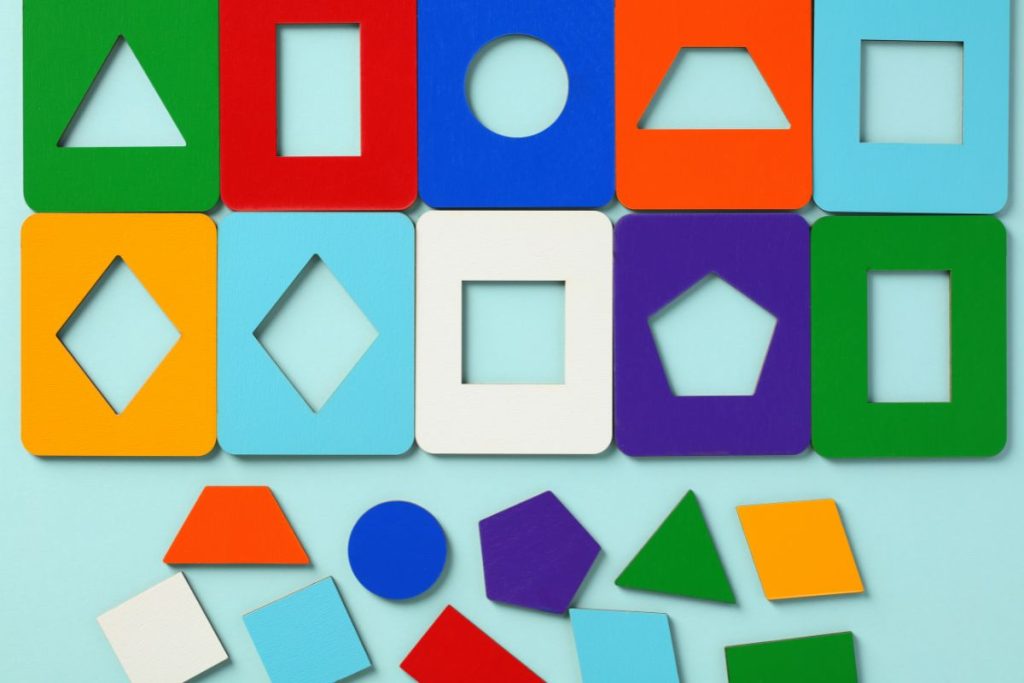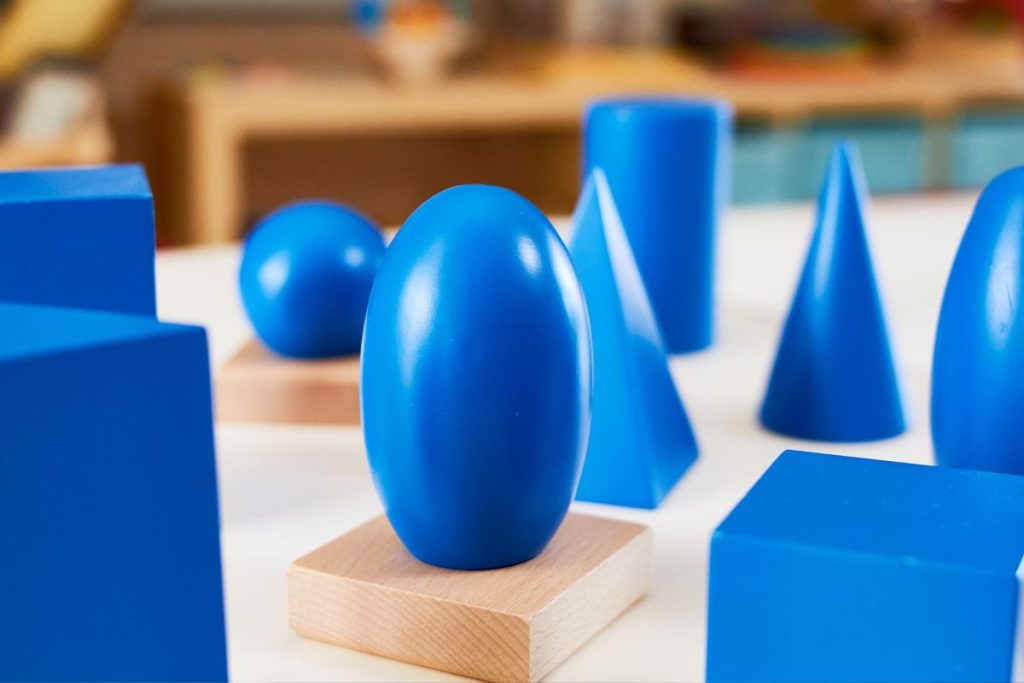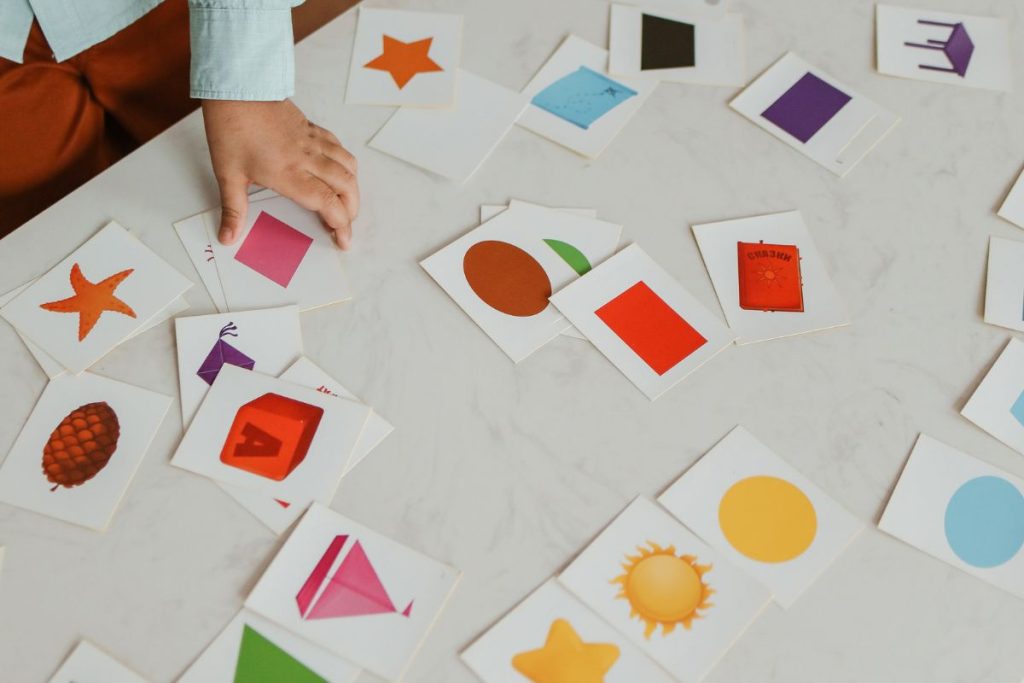Recognizing and understanding shapes are fundamental skills in a child’s early development, serving as a foundation for more complex learning in the future. Children usually start by learning basic shapes, which are the building blocks of comprehension for more complex geometric concepts. The question often arises: “What shapes do children learn first?” This essay delves into the intriguing process of how children learn shapes in their earliest years, focusing particularly on the first shapes they typically recognize.
What Shapes Do Children Learn First?

Basic Shapes
Children are typically first introduced to the basic shapes: circle, square, and triangle. These are simpler to understand, and they frequently appear in a child’s environment, making them easier to identify.
- Circle: This shape is often the first one that children learn to recognize. It’s simple and commonly seen in everyday items like the sun, buttons, or wheels.
- Square: The square is another early shape for children. It has four equal sides and can be seen in objects like blocks, tiles, and some boxes.
- Triangle: Although slightly more complex due to its angled lines, the triangle is typically among the first shapes children learn. They may see it in objects such as pyramids, slices of pizza, or mountain peaks.
Advanced Shapes
As children grow older and their cognitive skills improve, they begin learning about more advanced shapes like rectangles, ovals, and diamonds. These shapes are a bit more complex and require a greater degree of cognitive development to recognize and understand.
- Rectangle: This shape has four sides, two of which are longer than the other two. Children may see it in objects like doors or windows.
- Oval: The oval is a stretched-out circle, making it slightly more challenging to identify. Children may encounter this shape in fruits like eggs, apples, or oranges.
- Diamond: The diamond’s angled lines make it somewhat tricky to identify, but children may see it in objects like playing cards or kites.
Shape Recognition Milestones
- Aged 1-2 years: At this stage, children can generally identify the basic shapes of circles, squares, and triangles. They may not be able to name them, but they can usually match similar shapes.
- Aged 2-3 years: By now, most children can name the basic shapes. They start recognizing and naming more complex shapes like rectangles and ovals.
- Aged 3-4 years: Children can typically draw basic shapes and begin to understand the concept of symmetry. They might start recognizing more intricate shapes such as the diamond.
- Aged 4-5 years: At this age, children can usually recognize most shapes, even complex ones like pentagons and hexagons. They also begin to understand the concept of three-dimensional shapes.
How Children Recognize Different Shapes

Children begin to recognize shapes by associating them with familiar objects in their environment.
For example, the circular shape of the sun or buttons they see daily helps them identify a circle.
Similarly, square objects like tiles and boxes aid in understanding the square shape.
Their learning is heavily dependent on visualization and object association.
Factors Affecting the Order of Learning Shapes
The order in which children learn shapes is influenced by various factors.
Firstly, it’s the complexity of the shape. Simple shapes with fewer lines and angles like circles and squares are easier for children to understand compared to complex shapes like rectangles and diamonds.
Secondly, the frequency of the shape’s appearance in a child’s surroundings also plays a part. The more exposure a child has to a particular shape, the quicker they tend to recognize it.
Examples of Shape Learning in Everyday Life
- Kitchen: A child might learn to identify a circle by observing a round plate or a cookie, a rectangle by noticing the shape of the dining table, and a square from the tiles on the kitchen floor.
- Playground: The triangular shape of the slide, the circular shape of the merry-go-round and the square-shaped windows on the playhouse can all serve as great learning tools for children.
- Classroom: Teachers often use shape puzzles, flashcards, and drawings to help children recognize different shapes. For instance, a diamond might be introduced through a drawing of a kite.
In this way, children’s everyday environments are rich with opportunities for learning and recognizing shapes, which forms a crucial part of their early cognitive development.
The First Shape
The First Shape Children Learn
The first shape that children usually learn is the circle. The simplicity of its form, with no corners or edges, makes it easy for the young mind to recognize and understand.
Why Children Learn The Circle First
One of the reasons why the circle is usually the first shape children learn is its frequent appearance in their environment. Circles are everywhere – from the round buttons on their clothes to the circular wheels of their toys. This commonality makes it easier for children to identify and relate to this shape.
How Early Exposure Affects Learning
Early and frequent exposure to a shape significantly impacts how quickly a child can identify it. For example, a child who often plays with round balls or eats round fruits like apples may learn to identify a circle faster than a child who doesn’t have similar experiences.
The Role of Parents and Educators

Parents and educators play a critical role in teaching shapes to children. They can help children recognize the circle shape by pointing it out in everyday objects, reading books about shapes, or drawing and painting circles together.
- Everyday Objects: Point out the circle shape in everyday objects like plates, clocks, or the moon.
- Books about Shapes: Read books that teach shapes, emphasizing the circle whenever it appears.
- Drawing and Painting: Encourage children to draw or paint circles. This hands-on activity will help them understand the shape better.
Techniques for Teaching Shapes to Children
Parents and educators can employ a plethora of techniques to teach shapes to children.
- Using Real-life Objects: By pointing out different shapes in the child’s surroundings, they can relate theory to practice. For example, the square shape of a book, the rectangular shape of a mobile phone, or the circular shape of a pizza.
- Reading Books about Shapes: There are numerous children’s books that introduce shapes. Reading these books regularly can help children familiarize themselves with different shapes.
- Drawing and Coloring Shapes: Encourage children to draw and color shapes. This hands-on experience can help them recognize and remember shapes more effectively.
Resources for Shape Learning
Multiple resources can aid the process of shape learning.
- Shape Flash Cards: These can be used to teach and review shapes with children.
- Shape Puzzles: Puzzles with different shapes can help children recognize and understand shapes in a fun way.
- Shape Sorting Toys: These toys can aid in shape recognition and also help improve the child’s motor skills.
Recommended products: Carson Dellosa 4-Pack Preschool Flash Cards for Toddlers
Melissa & Doug Deluxe Jumbo Knob Wooden Puzzle
Activities for Shape Learning

Incorporating shape learning into everyday activities can make the learning process enjoyable and effective.
- Shape Hunt: Organize a shape hunt where the child has to find objects of a specific shape.
- Shape Collage: Create a collage using cut-outs of different shapes. Children can color and stick the shapes, enhancing their understanding.
- Shape Matching: Use shape flashcards for a matching game. This can help reinforce their memory of the shapes.
By adopting these techniques, using proper resources, and incorporating fun activities, parents and educators can effectively teach children to recognize and understand different shapes.
Conclusion
Learning shapes is a fundamental step in a child’s early cognitive development, serving as the building blocks for recognizing letters, and numbers, and understanding the world around them. It’s fascinating to realize that this learning process begins with the simplest shape – the circle, which children often learn first due to its simplicity and ubiquitous presence in their environment. As parents and educators, we should seize every opportunity to enhance this learning process. From engaging in fun shape-based activities to utilizing resources like shape flashcards and puzzles, there are countless ways to nurture this essential aspect of childhood learning. Here’s to every circle, square, triangle, and rectangle our children are yet to discover – and the countless learning adventures these shapes will undoubtedly inspire!
